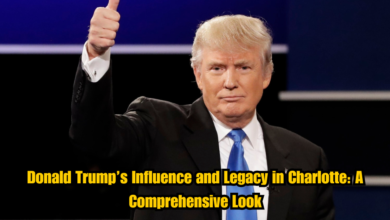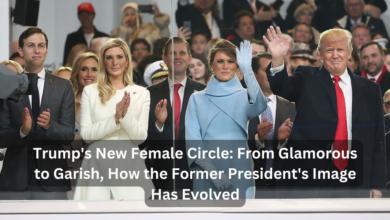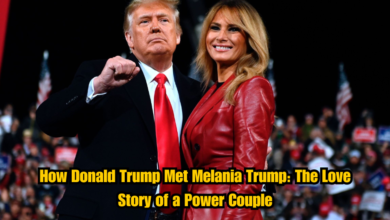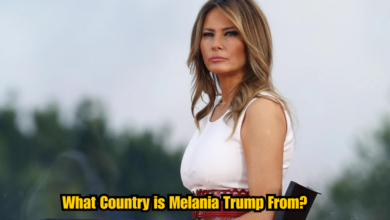Vindicating Trump: A Comprehensive Review of Current Perspectives
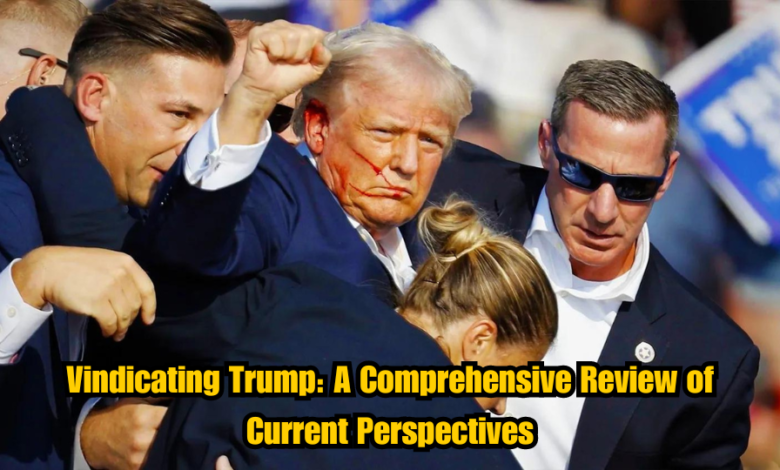
Since Donald Trump stepped into the political arena, he has been a figure of polarizing debates. His tenure as the 45th President of the United States remains one of the most controversial and impactful presidencies in American history. This article aims to offer a balanced and comprehensive review of the arguments and perspectives that both criticize and support Trump’s political decisions. By examining his policies, influence, and legacy through an analytical lens, we seek to provide a well-rounded vindication of Trump’s actions during and after his presidency.
Introduction: The Polarizing Figure of Donald Trump
Donald Trump’s influence in modern politics cannot be understated. His rise to power represented a departure from the traditional political norms, making him a leader who reshaped the Republican Party and introduced new dynamics into American and global politics. From his “America First” policies to his handling of domestic and international relations, Trump’s actions have been both lauded and condemned.
The aim here is not to take a definitive side but to present the multifaceted nature of his leadership and explore how the man behind the slogan “Make America Great Again” may indeed deserve a second look through a vindicating lens. Below, we delve into the key areas that have been central to his presidency and the criticisms that he faced, providing an objective analysis that contributes to a more nuanced understanding of his political journey.
Trump’s Economic Policies: The Good, The Bad, and The Ugly
Economic Growth and the Tax Cuts
One of the most significant accomplishments during Trump’s presidency was the Tax Cuts and Jobs Act of 2017. This policy aimed to reduce the corporate tax rate from 35% to 21%, which was touted as a way to boost economic growth and attract investment. Supporters argue that it led to a short-term economic boost, increased corporate profitability, and record highs in the stock market.
However, critics contend that the policy disproportionately benefited the wealthy, increased the national deficit, and provided minimal benefits to the middle and lower-income groups. The question remains whether the growth it spurred can be considered sustainable in the long run.
Job Creation and Unemployment Rates
Trump’s tenure is often highlighted for its low unemployment rates. By early 2020, the U.S. unemployment rate had hit a 50-year low of 3.5%. This was, in part, due to business-friendly policies that encouraged investment and manufacturing in the United States. Key to his appeal was the promise to bring back American jobs, particularly in the manufacturing sector.
Critics argue that the nature of many of these jobs was precarious, with wage stagnation still being a significant issue for many American workers. Yet, it’s undeniable that the overall employment metrics improved, and for that, Trump deserves recognition.
Trade Policies: Tariffs and the Trade War with China
Trump’s approach to trade was unconventional. His tariffs on Chinese goods marked the beginning of a trade war that affected not only the U.S. and China but also global markets. The goal was to reduce the U.S. trade deficit and compel China to negotiate fairer trade terms.
While some industries were hurt by the reciprocal tariffs, others, like steel manufacturing, saw a revival. Economists remain divided on whether the trade war had its intended effect, but Trump’s willingness to stand firm against China is often cited as a strength in his foreign policy.
Foreign Policy: America First or America Alone?
NATO and Global Alliances
Trump’s approach to NATO was met with skepticism and, at times, outright hostility from traditional allies. His insistence that NATO members pay their fair share was a radical shift from previous U.S. stances. While his critics viewed it as a way of alienating allies, proponents argue that it was a necessary wake-up call that pushed countries to contribute more equitably to the alliance.
The broader question remains whether Trump’s unilateral tendencies weakened America’s global standing or if they served as a necessary recalibration of U.S. foreign policy priorities.
The Middle East: Peace Deals and Controversial Moves
Trump’s foreign policy in the Middle East has left an indelible mark. The Abraham Accords, which normalized relations between Israel and several Arab nations, was a landmark achievement that altered the geopolitical landscape. It was a testament to Trump’s deal-making capabilities and a rare instance of diplomatic success in a region fraught with conflict.
Conversely, his decision to withdraw U.S. troops from Northern Syria, effectively abandoning Kurdish allies, was widely condemned. Critics argue that it destabilized the region and emboldened adversaries like Russia and Iran. Thus, his Middle Eastern policy is a mixed bag that showcases both strategic acumen and questionable decisions.
Immigration Policies: Security vs. Humanitarian Concerns
The Border Wall and Immigration Reform
Trump’s most iconic promise—the border wall—symbolized his stance on immigration. His administration constructed approximately 450 miles of the barrier. Advocates argued that it was essential for national security and curbing illegal immigration.
However, the wall also became a flashpoint for controversy, with opponents pointing to its financial cost and humanitarian impact. The separation of families at the border, in particular, drew intense scrutiny and remains a blemish on Trump’s legacy.
The Impact on Legal Immigration
While Trump focused heavily on curtailing illegal immigration, his administration also made it more difficult for legal immigrants to enter the United States. Changes to the H-1B visa program and restrictions on asylum applications were part of a broader strategy to restructure immigration policy.
Supporters of these measures argue that they protected American jobs and addressed security concerns. Critics, however, believe that the stringent policies harmed America’s image as a welcoming nation and slowed down economic innovation by limiting the influx of skilled labor.
Health and Pandemic Response: Leadership Under Fire
COVID-19 Pandemic Handling
Perhaps the most defining issue of Trump’s presidency was his handling of the COVID-19 pandemic. His early response was criticized for downplaying the severity of the virus, which opponents argue led to avoidable casualties. Trump’s reluctance to wear masks publicly and his mixed messaging regarding lockdowns and treatment options were seen as confusing and counterproductive.
Yet, there are arguments in Trump’s favor. The Operation Warp Speed initiative, which expedited the development of COVID-19 vaccines, is considered a remarkable success. By securing billions of dollars in funding for vaccine development, Trump’s administration laid the groundwork for the rapid deployment of multiple vaccines in record time.
Healthcare Reforms and the Fate of the ACA
Another contentious area was his attempts to repeal the Affordable Care Act (ACA). While the ACA was not completely overturned, Trump succeeded in eliminating the individual mandate, a core element of the law. Supporters argued that it reduced unnecessary government interference, while opponents saw it as an attack on affordable healthcare.
Media and Public Perception: The Battle of Narratives
Trump vs. The Media
From the beginning, Trump positioned himself as the antagonist to mainstream media. His labeling of the press as the “enemy of the people” set the tone for a combative relationship. While his rhetoric was often criticized as divisive, it appealed to a base that felt alienated by the media’s portrayal of conservative values.
This led to the creation of alternative media ecosystems, where pro-Trump narratives thrived. Whether this reshaping of media consumption habits will have a lasting impact on the political landscape is still uncertain, but Trump’s influence in this area cannot be denied.
The Social Media Ban and Free Speech Debates
Trump’s removal from major social media platforms after the events of January 6, 2021, sparked a debate on free speech and the power of tech companies. Supporters of the ban argue that it was necessary to prevent further violence. However, it also raised concerns about censorship and the concentration of power in private entities.
Trump’s response has been to launch Truth Social, an alternative social platform aimed at promoting free speech. Whether this endeavor will succeed in challenging the dominance of major tech platforms remains to be seen.
Legacy: A Lasting Impact or a Fading Influence?
The 2024 Presidential Bid and Political Influence
Trump’s continued presence in the political sphere, even after his defeat in the 2020 election, shows that his influence endures. His announcement of a potential 2024 presidential run has reignited debates about his impact on the Republican Party and American politics. The Trump endorsement remains a powerful tool in Republican primaries, suggesting that his political legacy is far from over.
Trump’s Influence on the Republican Party
Perhaps Trump’s most lasting impact is his reshaping of the Republican Party. The emergence of “Trumpism” as a distinct political ideology, characterized by populist rhetoric, nationalism, and a focus on working-class concerns, has redefined what it means to be a Republican.
Whether Trump’s influence will fade or solidify into a permanent feature of American politics is yet to be determined, but it’s clear that his brand of politics has left an indelible mark.
Conclusion: Trump’s Vindication – A Balanced Perspective
In sum, Donald Trump’s presidency was marked by bold decisions, polarizing rhetoric, and substantial policy shifts. Whether one sees his tenure as a success or a failure largely depends on the lens through which it is viewed. While many of his policies remain contentious, others have had positive outcomes that are often overlooked. The arguments for and against vindicating Trump are complex and layered, making it necessary to examine his presidency with a nuanced approach.
As Trump continues to influence American politics, evaluating his legacy will remain a topic of intense debate. By acknowledging the strengths and shortcomings of his administration, we aim to contribute to a balanced understanding of one of the most consequential political figures in recent U.S. history.
